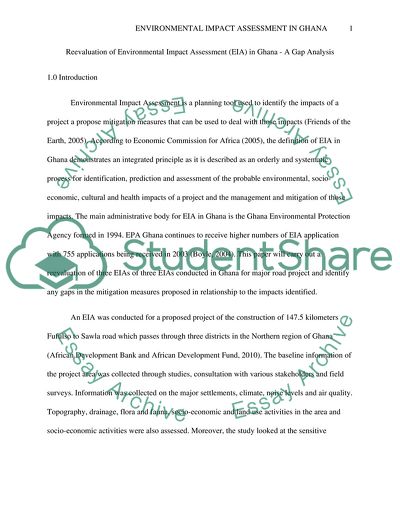Cite this document
(Reevaluation of Environmental Impact Assessment in Ghana - A Gap Report Example | Topics and Well Written Essays - 1750 words, n.d.)
Reevaluation of Environmental Impact Assessment in Ghana - A Gap Report Example | Topics and Well Written Essays - 1750 words. https://studentshare.org/environmental-studies/1767961-reevaluation-of-environmental-impact-assessment-in-ghana-a-gap-analysis
Reevaluation of Environmental Impact Assessment in Ghana - A Gap Report Example | Topics and Well Written Essays - 1750 words. https://studentshare.org/environmental-studies/1767961-reevaluation-of-environmental-impact-assessment-in-ghana-a-gap-analysis
(Reevaluation of Environmental Impact Assessment in Ghana - A Gap Report Example | Topics and Well Written Essays - 1750 Words)
Reevaluation of Environmental Impact Assessment in Ghana - A Gap Report Example | Topics and Well Written Essays - 1750 Words. https://studentshare.org/environmental-studies/1767961-reevaluation-of-environmental-impact-assessment-in-ghana-a-gap-analysis.
Reevaluation of Environmental Impact Assessment in Ghana - A Gap Report Example | Topics and Well Written Essays - 1750 Words. https://studentshare.org/environmental-studies/1767961-reevaluation-of-environmental-impact-assessment-in-ghana-a-gap-analysis.
“Reevaluation of Environmental Impact Assessment in Ghana - A Gap Report Example | Topics and Well Written Essays - 1750 Words”. https://studentshare.org/environmental-studies/1767961-reevaluation-of-environmental-impact-assessment-in-ghana-a-gap-analysis.


